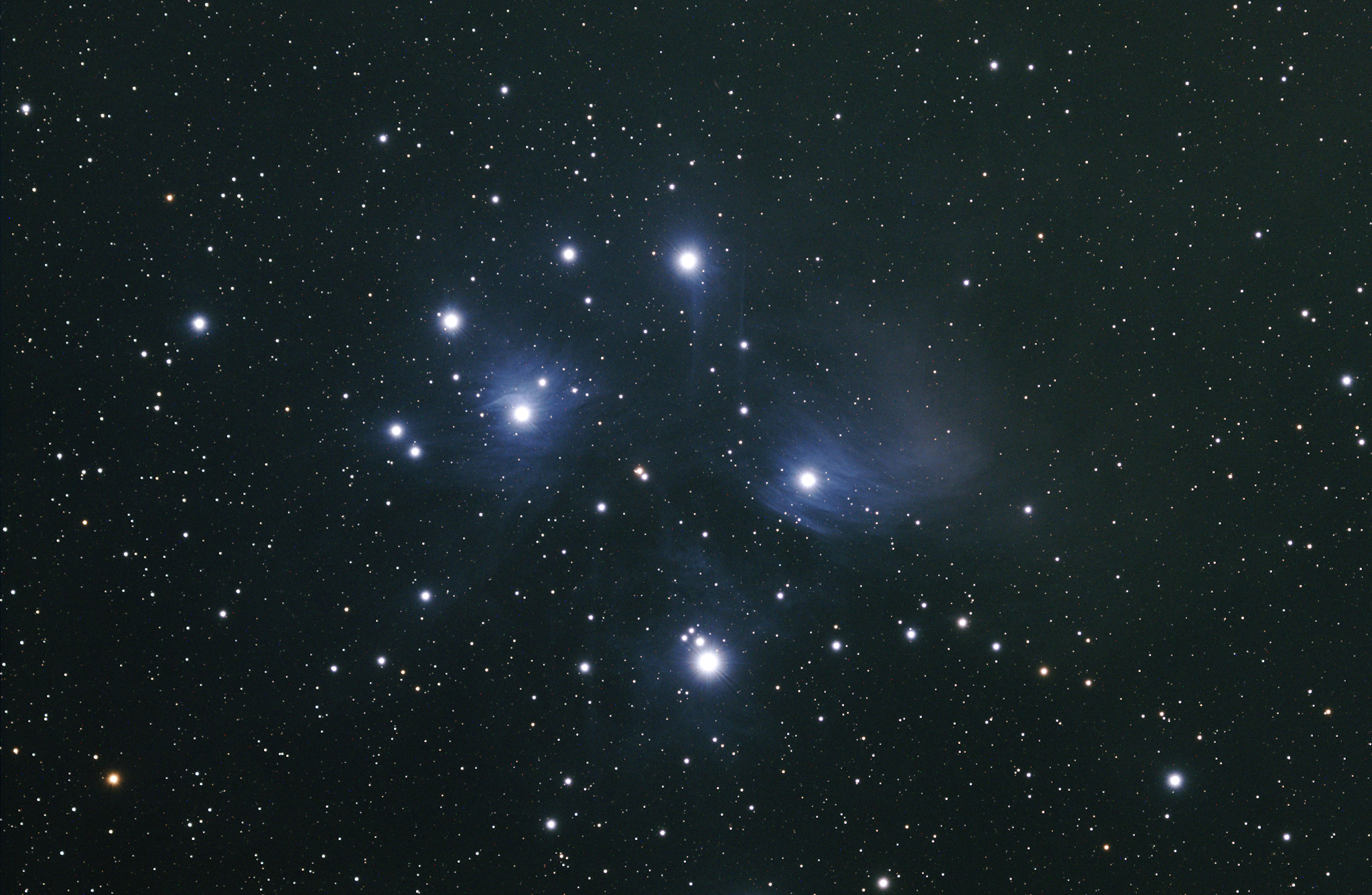The Pleiades: Messier 45
Age: ~100 million years
Distance: 444 ly
M45 is one of the closest star clusters to Earth and is easy to spot in the night sky. To me, this is easy to spot even from my light polluted back yard as it looks like a smudge in the sky. Pointing binoculars or a scope at it reveals the blueish stars that form the Pleiades.
There is some blueish cloudiness to this cluster (reflection nebula) that was initially thought to be dust left over from the formation of the stars, but it is now believed to be an unrelated dust cloud in the interstellar medium; dust in between the star cluster and Earth that is scattering starlight.
Nebula is Latin for ‘cloud’ or ‘fog’. In early astronomy, before telescopes with enough resolution were available, many astronomical objects were classified as ‘nebula’ to indicate that they were another cloudy looking object. With the lack of resolution to really see these objects sharply, this led to objects that are now known to be star clusters and galaxies to all be classified together.
Today, the term nebula is used to refer to clouds of dust or ionized gases such as hydrogen or helium. Galaxies and star clusters are not referred to as nebula anymore, but some targets may still indicate an 'association' to nebulosity (like the Pleiades is).
An emission nebula is a cloud of ionized gas that emits light at certain wavelengths (Such as Hydrogen gas). These clouds are excited by external energy, such as a nearby hot star. For example, it is common for ultraviolet light from a nearby star, invisible to the human eye, to ionize a cloud of gas that will then emit at a different wavelength that is visible (such as the color red from Hydrogen).
A reflection nebula may look like it is emitting its own light but is instead only reflecting the same light from nearby stars (much like fog on earth scatters light from your headlights or a laser pointer).
Happy New Year to all...time to move those clouds!

Comments
Post a Comment